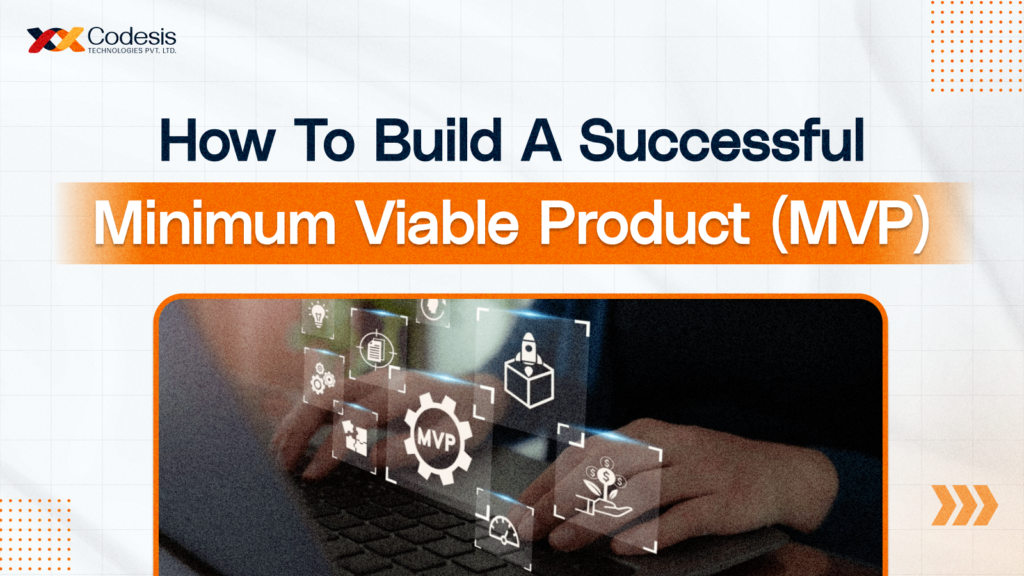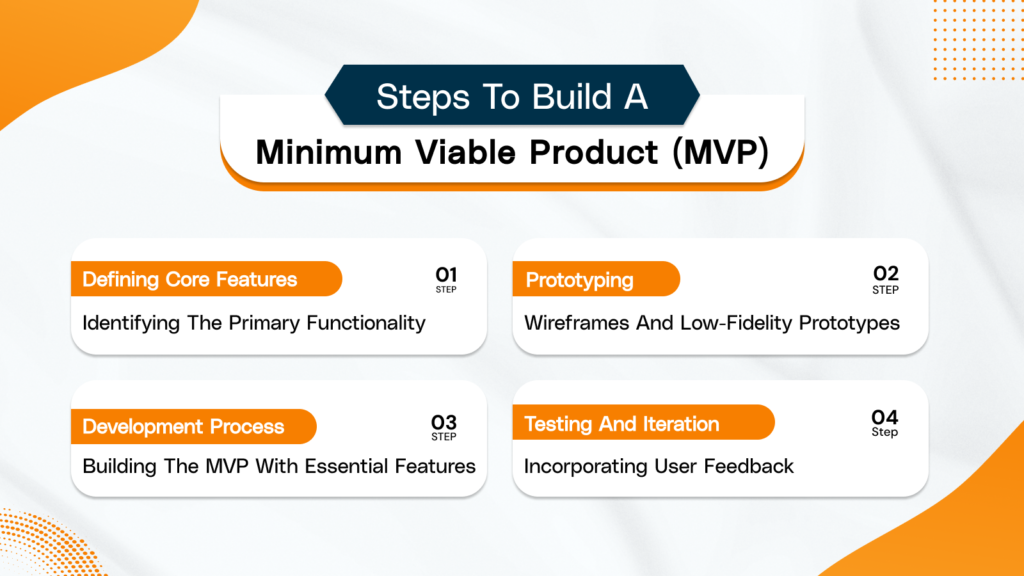
Post Views: 253 Futureproof hybrid cloud platform for modern apps Introduction The past few years have seen a significant inclination...

Did you know that approximately 90% of startups fail in the world every year? This is because most startup entrepreneurs with limited resources launch a fully feature-loaded product without testing it on the market. Developing a successful product is tough nowadays, however starting with a Minimum Viable Product (MVP) lets companies verify ideas, save money, and make improvements primarily based on real customer feedback. Companies can test their concept and ideas with a target audience before fully developing the product using Minimum Viable Product (MVP). Which is a simplified version of a product that only has the most important features.
It is expensive and risky for a startup or company to launch a fully feature-loaded product first. This is when the Minimum Viable Product (MVP) comes into the scene. Which allows companies to launch the most simple but workable product. The MVP’s purpose is to solve a major problem or provide a significant advantage. Hence, the firm can evaluate interest in the product, gather feedback and decide how to best improve the product and create a market-fit product.
This guide will show you how the Minimum Viable Product (MVP) addresses the needs of your business, its importance, the process of developing it, its major challenges, MVP development tips, and case studies. Whether you are designing a new application, providing a service, or developing a tech product.
A Minimum Viable Product (MVP) is nothing but the simplest version of the product which is developed with only important and needed features to satisfy the early end user. This allows companies to launch a product quickly and improve the product with the help of important feedback from the early users and refine the product to fit in the market.
The Minimum Viable Product (MVP) provides the product with the core functionality without any unnecessary features by just focusing on the ‘Minimum’ and the ‘Viable’ parts of the product. The MVP is very popular in the product development industry. because it provides real data and feedback from the users and shows if the product resonates with the user and if it has a market fit.
Using the Minimum Viable Product (MVP) approach in your product development journey can be very beneficial for the companies as it can minimise the risk of a full-scale launch by testing the product idea in the market and seeing it holds value and feedback from early users.
This testing process allows companies and businesses to measure the following factors:
With only prioritising essential and important features, a Minimum Viable Product (MVP) provides the information of what’s most valuable to the user, which helps in the product’s future development.
Creating a Minimum Viable Product (MVP) is a very perfect and effective way to test your product in the real world and see if your product has the potential, audience and market demand. The MVP allows you to validate and check the concept of the product rather than creating an entire product. The result from this can highlight gaps in user needs and demand or areas of improvement.
As we move towards the steps to build an MVP, the first step is to identify what problem or issue your Minimum Viable Product (MVP) will solve. One can never focus on building a complete feature-loaded product instead focus on delivering one important primary feature that not only provides benefits to the user but also represents the product’s core value in the market. Always create the MVP with the minimum functionality needed to fulfil the purpose of the product and resonate with users.
Questions to ask yourself:
Defining core features guarantees that your MVP is streamlined, focused, and serves its purpose.
After you have identified the core feature for your MVP, the next step comes into the frame which is to create wireframes or low-fidelity prototypes to visualise how your Minimum Viable Product (MVP) will look.
Using prototypes one can experiment with the user interface, flow and functionality of the product without completely entering into the product development. Tools like Figma, Sketch and Adobe XD are great for creating these prototypes and identifying any usability or functionality issues.
Prototyping helps in various factors:
Key points to focus on while development:
At the final stage when your Minimum Viable product (MVP) is live, one should gather all the feedback from the users and see how the product is performing to early users. Testing the product allows you to find bugs, and issues, evaluate user experience and understand if there are any pain points in the product.
Based on the valuable feedback from the user, one can refine the MVP and make improvements accordingly. The process of the testing and iteration of MVP never stops it keeps continuing to improve the product and make it better over time.

A widespread mistake made by every company is adding too many features in the Minimum Viable Product (MVP) which are not essential for the product. Because of this, the focus of the product gets shifted from its main purpose which complicates the product. An MVP should have fewer features and be efficient, which solves main issues and problems quickly and effectively without any extra unnecessary features.
The main purpose of creating an MVP is to learn from user feedback and make informed decisions and improvements using the same. So it is very critical to follow this step but if you fail to use the user feedback and insights and essentially ignore them, it can lead you to a product that does not fit with the needs and requirements of the users.
One must use the interviews, surveys, or analytics to understand how their Minimum viable product (MVP) is performing and refine the product accordingly.
Again a very common and crucial mistake made by the company is using the wrong tech stack, choosing a tech stack that is inflexible and unsuitable for the scalability and performance of the Minimum Viable Product (MVP).
One should always choose a tech stack which is reliable and easy to scale when the product grows, also teaming up with experienced product developers for the development of your MVP will make sure the product keeps functioning smoothly as you add new features to it without any issues.

Here are some companies that launched with an MVP and became industry giants later on:
At the start, Airbnb’s MVP was a website that offered listings for air mattresses in the apartment owned by the founders. This let them prove the demand for cheaper, shared spaces and allowed them to learn what travellers prioritised. Today Airbnb is a post popular C2C global e-commerce marketplace for hospitality experiences.
When Dropbox was first created. The creators released a bare minimum viable product (MVP) which was a 60-second video that described how the company would function. This MVP approach meant that they could validate interest in the full product and get thousands of people to sign up before building the full product.
The Minimum Viable Product (MVP) of Twitter was a microblogging with an option to post short updates. The initial application was comparatively fundamental but as the people started using it, Twitter started adding more features and sub-features in response to the calls which made it one of the biggest social networking sites today.
Lessons Learned and Key Takeaways:
All of the above businesses use Minimum Viable Product (MVP) to see demand and receive feedback from users on the viability of the idea. They decided to launch simplified features because they were able to find what features users needed and offer successful, scalable products based on that data.
Implementing important MVP development tips is very crucial when creating a Minimum viable product (MVP). A smooth and successful launch of MVP can be achieved by following these tips. First, you can start by focusing on the core values by identifying a single important problem your product will solve, which keeps the MVP simple and impactful. Always stick to the core features to avoid feature overload in the MVP, which not only lowers the cost but improves user experience.
Also, getting feedback from actual consumers early on so that the product can be improved depending on their needs and demands. To guarantee that the MVP should grow and scale as you add new features, you must choose a flexible tech stack. By following these MVP development tips, you can produce a product that aligns with users’ demands and grow your company.
Developing an MVP is one of the best strategies in business for developing a product with the idea. Especially for startups or companies that have not researched market demand with precision. Since targeted businesses usually only offer a limited set of features. They can start up quickly, gain information and feedback from real customers, and adapt functions according to real requirements.
An MVP is not only about minimizing risk, but it also prevents the company from over-adding the product with features that are not essential. it helps the product to grow according to the expected rate.
It is very crucial to choose a perfect MVP development team. A great technology partner and MVP development company such as Codesis Technology can help improve MVP development in a big way. With a focus on an agile methodology approach and a great understanding of business needs, we at codesis can help its clients to design and build Minimum Viable Product (MVP) products that are both efficient now, and able to evolve as the business grows. Our industry experience makes us the perfect choice for your MVP development with our tech stack.

Post Views: 253 Futureproof hybrid cloud platform for modern apps Introduction The past few years have seen a significant inclination...

Post Views: 238 Angular vs React: Which JS Framework Should You Choose? Introduction While working with JavaScript Frameworks you must...
Post Views: 273 Importance of Agile Methodology in Software Development Introduction Software development processes like Agile methodology have proven themselves...

Post Views: 264 Types of Mobile Applications: The Definitive Guide You Need in 2024 Introduction to types of Mobile Applications:...